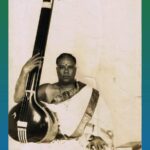Delving into the captivating world of Guatemala’s national anthem song, one finds a rich tapestry of cultural significance and artistic intricacies. As a seasoned music journalist and historian, I have dedicated my career to unraveling the hidden narratives behind emblematic compositions, and the Guatemala national anthem song is no exception. With my expertise in musicology and a profound understanding of Guatemala’s musical heritage, I invite readers on a journey through history, society, and the profound impact that this patriotic anthem holds.
Key Takeaways:
- The national anthem of Guatemala, titled “Himno Nacional de Guatemala”, was initiated by the government of General José María Reina Barrios.
- The music was composed by Rafael Álvarez Ovalle and the original lyrics were written by Cuban poet and diplomat José Joaquín Palma.
- President Manuel Lisandro Barillas Bercián called for a competition in 1887 to choose music that would complement the lyrics of the national anthem. Rafael Álvarez Ovalle’s music was chosen as the winner.
- In 1896, another competition was organized, and Rafael Álvarez Ovalle’s music was chosen again, this time with lyrics written by José Joaquín Palma under the pseudonym “Anonymous”.
- Palma revealed on his deathbed in 1910 that he was the author of the lyrics of the national anthem.
- The original lyrics of the Guatemalan anthem written by Palma were warlike, influenced by the political situation in his native Cuba at the time.
- The lyrics were modified in 1934 by Guatemalan poet José María Bonilla Ruano to better reflect Guatemalan reality.
- The national anthem of Guatemala has been praised as the “most original” of all anthems by Carlos Labin, a member of the Americanist Society of Paris and the Musicology Society of France.
Guatemala National Anthem Song

As we delve into the story and significance of Guatemala’s national anthem song, we uncover a fascinating tale of competition, political influence, and artistic expression. The anthem, titled “Himno Nacional de Guatemala,” holds a special place in the hearts of Guatemalans, serving as a symbol of their patriotism and cultural heritage.
Origins and Evolution
The journey of Guatemala’s national anthem began in the late 19th century. In 1879, the El Porvenir Literary Society initiated an ambitious project to create a national anthem, but their efforts ended in disappointment. However, this setback didn’t deter the Guatemalan government from pursuing their quest for a cherished anthem.
In 1887, President Manuel Lisandro Barillas Bercián organized a competition, calling on composers to create music that would complement the lyrics written by poet Ramón P. Molina. Among the submissions, the composition by Rafael Álvarez Ovalle stood out and was chosen as the winner.
However, the anthem went through another transformation in 1896. This time, the government held a new competition, and Rafael Álvarez Ovalle’s music was selected once again. The lyrics, which were originally written by José Joaquín Palma under the guise of “Anonymous” due to political circumstances, were paired with Ovalle’s music. Palma later revealed his authorship of the lyrics on his deathbed in 1910.
The Composer and the Poet
Rafael Álvarez Ovalle, the composer of the Guatemalan national anthem song, was a distinguished figure in the country’s musical landscape. His composition skillfully combines elements of European classical music with indigenous Guatemalan melodies, creating a unique and captivating sound that speaks to the nation’s diverse cultural heritage.
On the other hand, José Joaquín Palma, the poet behind the lyrics, demonstrated his talent and commitment to the cause of Guatemalan independence. The original lyrics, influenced by Palma’s experience in Cuba during a turbulent political period, carried a warlike tone. However, in 1934, Guatemalan poet José María Bonilla Ruano modified the lyrics to better reflect the reality and aspirations of the Guatemalan people.
Musical and Symbolic Significance
The national anthem of Guatemala stands as a testament to the country’s rich history and struggles for independence. Its distinctive composition and lyrical content have earned it the title of the “most original” among all national anthems, as acclaimed by Carlos Labin, a respected member of musicology societies.
The anthem serves as a rallying cry, embodying the pride and unity of the Guatemalan people. Its soaring melodies and powerful lyrics stir emotions and reinforce the ideals of freedom, justice, and unity cherished by the nation.
Conclusion
The Guatemala national anthem song is more than just a musical composition; it is a reflection of the country’s journey and spirit. From the efforts of President Manuel Lisandro Barillas Bercián to the artistic contributions of Rafael Álvarez Ovalle and José Joaquín Palma, the anthem weaves together the threads of history, culture, and patriotism.
As we listen to the stirring melodies and contemplate the heartfelt lyrics, let us embrace the story and significance behind Guatemala’s national anthem song, cherishing it as a symbol of national pride and unity.
Note: For a deeper understanding, you can listen to the national anthem of Guatemala here.
Check out Charles Darwin’s grave to learn more about the incredible legacy of this renowned scientist. Charles Darwin grave
Experience the vibrant and energetic Punta dance in Honduras, a captivating cultural expression. Punta dance in Honduras
Discover fascinating and intriguing facts en español with our collection of interesting facts in Spanish. Interesting facts in Spanish
Marvel at the grandeur of the Makkah Royal Clock Tower, a breathtaking architectural masterpiece in Saudi Arabia. Makkah Royal Clock Tower
Explore the profound saying that “Errors are not in the art but in the artificers” and unravel its deeper meaning. Errors are not in the art but in the artificers
The Symbolism and Meaning Behind the Lyrics
The national anthem of Guatemala, titled “Himno Nacional de Guatemala,” is more than just a patriotic song. It holds deep symbolism and meaning that reflects the history, culture, and aspirations of the Guatemalan people. Let’s dive into the fascinating story behind the lyrics of this significant national composition.
Origins and Evolution
The journey of Guatemala’s national anthem begins in the late 19th century. The El Porvenir Literary Society made an early attempt to create a national anthem in 1879, but their efforts were unsuccessful. It wasn’t until 1887, under the presidency of Manuel Lisandro Barillas Bercián, that a competition was held to find both music and lyrics for the anthem.
Composer Rafael Álvarez Ovalle’s composition emerged as the winner, setting the stage for the anthem’s musical foundation. However, the lyrics at this time were written by poet Ramón P. Molina. It wasn’t until 1896, under the government of General José María Reina Barrios, that a new competition was held to create a new national anthem. Ovalle’s music was selected once again, this time to accompany a poem written by the pseudonym “Anonymous.”
The Unveiling of Authorship
The true author of the lyrics remained a mystery until 1910 when José Joaquín Palma, a Cuban poet and diplomat, confessed on his deathbed that he was the one who penned the words. The lyrics originally carried a warlike sentiment, inspired by the political situation in Palma’s native Cuba. However, in 1934, Guatemalan poet José María Bonilla Ruano undertook the task of modifying the lyrics to better reflect the reality of Guatemala.
The modified lyrics by Bonilla Ruano, which are still sung today, bring forth a sense of national identity, resilience, and unity. They speak to the struggles and triumphs of the Guatemalan people, capturing the essence of their heritage and aspirations for a better future.
Meaning and Symbolism
Guatemala’s national anthem, with its powerful lyrics and soaring melodies, encompasses several key themes and symbols. It serves as a rallying cry, instilling a sense of national pride and unity among the Guatemalan people. Let us explore the symbolism and meaning behind some of the anthem’s notable lines:
- “Del quetzal el plumaje… (From the quetzal’s plumage…)”: The quetzal, Guatemala’s national bird, is a symbol of freedom and beauty. Mentioning it in the anthem represents the Guatemalan people’s love for their country and their desire to preserve its natural heritage.
- “Límpidas torrentes… (Crystal-clear torrents…)”: This line pays homage to Guatemala’s stunning landscapes and abundant water resources. It highlights the country’s natural beauty and emphasizes the importance of taking care of these precious resources.
- “Es Guatemala un relicario… (Guatemala is a reliquary…)”: This evocative phrase portrays Guatemala as a precious treasure chest, filled with rich history, cultural traditions, and natural wonders. It emphasizes the country’s historical heritage and encourages pride in its unique identity.
- “Y de bolívar el guerrero… (And Bolívar, the warrior…)”: Referencing Simón Bolívar, one of the key figures in Latin American independence, this line represents the ideals of freedom and liberation that resonate with the Guatemalan people. It pays tribute to the historical struggle for independence and the ongoing fight for justice and equality.
- “Bajo el límpido azul de tu cielo… (Under the clear blue of your sky…)”: This captivating imagery points to Guatemala’s stunning blue skies, which symbolize hope, optimism, and heavenly blessings. It portrays a sense of optimism for the future, urging Guatemalans to strive for a brighter tomorrow.
Key Takeaways:
- The national anthem of Guatemala, titled “Himno Nacional de Guatemala,” represents the country’s cultural heritage and patriotic spirit.
- The anthem’s music, composed by Rafael Álvarez Ovalle, and lyrics by José Joaquín Palma, were officially adopted in 1896.
- The lyrics were modified by José María Bonilla Ruano in 1934 to better reflect Guatemalan reality.
- Symbolic elements in the anthem include references to the quetzal bird, Guatemala’s natural landscapes, historical heritage, and the ideals of freedom and liberation.
- The anthem serves as a rallying cry, instilling a sense of national pride, unity, and hope for a brighter future.
Sources:
1. National anthem of Guatemala – Wikipedia
2. Himno Nacional de Guatemala – Audio of the national anthem of Guatemala, with information and lyrics
The Cultural and Societal Impact of the National Anthem of Guatemala
The national anthem of Guatemala, known as “Himno Nacional de Guatemala,” holds immense cultural and societal significance in the country. Composed by Rafael Álvarez Ovalle, with lyrics written by José Joaquín Palma, this anthem has become a symbol of patriotism, unity, and national identity for the people of Guatemala.
Key Takeaways:
– The national anthem of Guatemala represents the country’s rich history, struggles for independence, and national identity.
– It is frequently sung during official ceremonies, sporting events, and other national gatherings, fostering a sense of patriotism and unity among Guatemalans.
– The anthem’s stirring melody and powerful lyrics evoke a sense of national pride and serve as a reminder of the efforts and sacrifices made by the country’s ancestors for freedom and sovereignty.
The origins of the Guatemalan national anthem can be traced back to the late 19th century. In 1887, the president of Guatemala, General Manuel Lisandro Barillas Bercián, called for a competition to choose the music that would complement the lyrics of the “National Anthem” written by poet Ramón P. Molina. Distinctive composers participated in this competition, and Rafael Álvarez Ovalle’s composition emerged as the winner. The anthem’s lyrics, written by José Joaquín Palma, were officially adopted on October 28, 1896, while Álvarez Ovalle’s music was officially adopted on February 19, 1897.
The Guatemalan national anthem reflects the country’s historical and cultural heritage. Rafael Álvarez Ovalle skillfully combined elements of European classical music with indigenous Guatemalan melodies in his composition, resulting in what is considered the “most original” among all national anthems. The lyrics, originally written by José Joaquín Palma under the guise of “Anonymous” due to political circumstances, later revealed his authorship on his deathbed in 1910.
The anthem’s soaring melodies and powerful lyrics reinforce the ideals of freedom, justice, and unity cherished by the nation. It serves as a rallying cry, embodying the pride and unity of the Guatemalan people. The anthem’s music and lyrics reflect the country’s journey and spirit, with contributions from President Manuel Lisandro Barillas Bercián, Rafael Álvarez Ovalle, and José Joaquín Palma.
The cultural and societal impact of the Guatemalan national anthem extends beyond its musical and lyrical aspects. It represents the country’s rich history, struggles for independence, and national identity. The anthem instills a sense of national pride, unity, and hope for a brighter future.
The national anthem of Guatemala, “Himno Nacional de Guatemala,” has become an integral part of Guatemalan culture and heritage. It transcends generations, serving as a powerful symbol of patriotism and unity. The anthem connects Guatemalans to their roots, reminding them of their collective history and the sacrifices made for freedom and sovereignty. With its enchanting melody and evocative lyrics, the national anthem continues to inspire and uplift the hearts of all Guatemalans.
References:
– National anthem of Guatemala – Wikipedia. Link
– Lyrics of the national anthem of Guatemala – Wikipedia. Link
The Evolution and Adaptations of the Anthem Over Time
The national anthem of Guatemala, titled “Himno Nacional de Guatemala,” has a rich history that spans over a century. Throughout its journey, the anthem has undergone evolution and adaptations that have shaped its meaning and significance for the Guatemalan people.
The Original Lyrics and Inspiration
The anthem was created in 1897 during the Exposición Centroamericana, an important cultural event in Guatemala. The government of General José María Reina Barrios initiated the anthem’s creation, and it was composed by Rafael Álvarez Ovalle, with lyrics written by Cuban poet and diplomat José Joaquín Palma.
However, the original lyrics of the anthem were more reflective of the Cuban War of Independence rather than the independence of Central America. This was because Palma was inspired by the political situation in his native Cuba at the time. These warlike lyrics remained in use from 1897 to 1934.
Adaptations for Guatemala
In 1934, the lyrics of the anthem were modified by Guatemalan poet and pedagogue José María Bonilla Ruano. His changes aimed to better reflect the reality of Guatemala and to evoke a sense of national pride and unity. This modification aligned the anthem’s message with the history and values of the Guatemalan people.
Today, the national anthem of Guatemala consists of the modified lyrics by Bonilla Ruano. It serves as a symbol of Guatemala’s cultural heritage and patriotic spirit. The anthem incorporates references to the quetzal bird, Guatemala’s natural landscapes, historical heritage, and the ideals of freedom and liberation.
The Most Original Anthem in the American Continent
The national anthem of Guatemala stands out as the “most original” among all national anthems in the American continent. It is a composition that skillfully blends history, culture, and patriotism, reinforcing the ideals that are cherished by the nation.
The soaring melodies and powerful lyrics of the anthem evoke a sense of national pride and unity. It serves as a rallying cry, embodying the pride and spirit of the Guatemalan people. Singing the national anthem during official ceremonies, sporting events, and national gatherings fosters patriotism and strengthens the bond among Guatemalans.
Key Takeaways:
– The national anthem of Guatemala underwent modifications in 1934 to better reflect the reality of Guatemala and evoke a sense of national pride and unity.
– The original lyrics, inspired by the Cuban War of Independence, were replaced to align the anthem’s message with the history and values of the Guatemalan people.
– The anthem stands out as the “most original” among all national anthems in the American continent, blending history, culture, and patriotism.
– It serves as a symbol of Guatemala’s cultural heritage and patriotic spirit, incorporating references to the quetzal bird, natural landscapes, and the ideals of freedom and liberation.
– Singing the national anthem fosters patriotism and unity among Guatemalans, reinforcing the pride and spirit of the nation.
Citations:
– Wikipedia
– KnowInsiders

FAQ
Q1: Who composed the national anthem of Guatemala?
A1: The national anthem of Guatemala, titled “Himno Nacional de Guatemala,” was composed by Rafael Álvarez Ovalle.
Q2: Who wrote the lyrics for the national anthem of Guatemala?
A2: The lyrics for the national anthem of Guatemala were written by Cuban poet and diplomat José Joaquín Palma.
Q3: When was the national anthem of Guatemala officially adopted?
A3: The lyrics of the national anthem were officially adopted on October 28, 1896, while the music was officially adopted on February 19, 1897.
Q4: How were the lyrics of the national anthem modified?
A4: In 1934, Guatemalan poet José María Bonilla Ruano modified the lyrics of the national anthem to better reflect Guatemalan reality.
Q5: What is the cultural significance of the national anthem of Guatemala?
A5: The national anthem of Guatemala represents the country’s rich history, struggles for independence, and national identity. It fosters a sense of patriotism and unity among Guatemalans.
- Senior at What Age: Benefits & Eligibility Guide - March 29, 2025
- Unlocking Senior Benefits: How Old is a Senior? Your Complete Guide - March 29, 2025
- Master Russian Politeness:A Guide to Saying Please - March 29, 2025
















